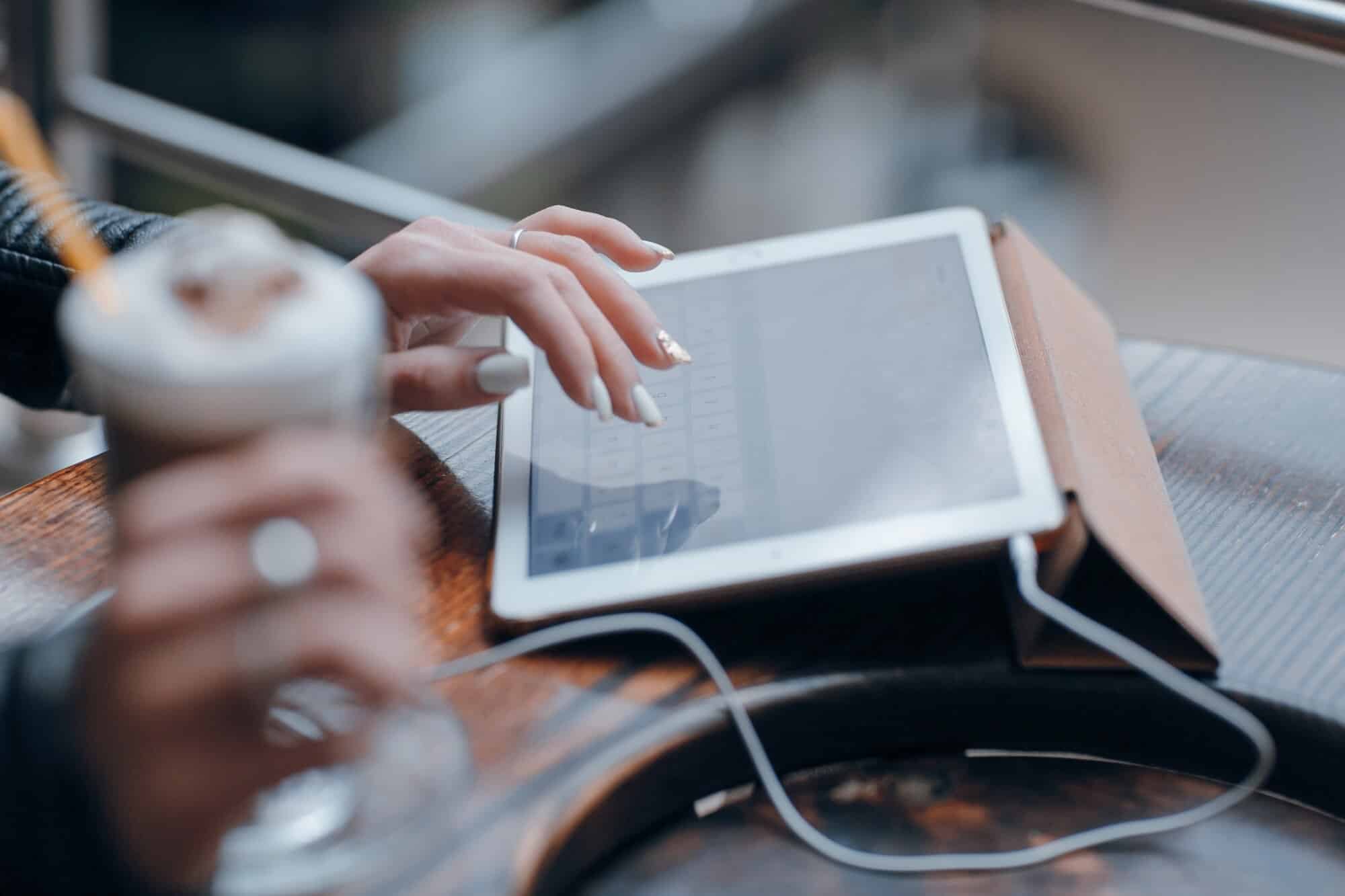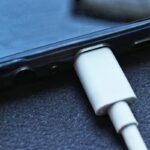
If you’ve noticed your iPad charging more slowly lately, you may feel frustrated whenever you try to use it. This does not necessarily mean that your iPad needs to be replaced. There could be several factors at play, some of which you can easily address yourself. This guide will provide some reasons why your iPad may be charging so slowly, as well as some practical steps to help it charge faster.
Common Reasons Why iPads Charge Slowly
Is your iPad charging slowly? Here are some common issues that might be the cause.
1. Using a Non-Original Charger or Cable
Third-party chargers may deliver less power than your iPad needs to charge efficiently. Apple designs each iPad model with specific power requirements that generic charging cables do not always comply with. Cheap chargers will not provide a consistent power flow to your device. To charge as fast as possible, use an Apple charger or certified alternative with the same power specifications as your iPad model.
2. Faulty Charging Port or Cable
Your charging cable takes a beating every single day. Constant plugging, unplugging, and general wear and tear can degrade its performance with time. If your iPad stops charging whenever you move the cable slightly, this is a sign of physical damage. Replace any visibly damaged cables and get professional help if multiple cables fail to charge your iPad effectively.
3. Weak Power Source
Computer USB ports provide around half the power that an Apple charging port can provide. Charging using your laptop, car USB port, or power bank can turn a quick charge into an all-day affair, especially with newer iPad models. The solution is simple: always use the wall adapter included with your specific iPad model.
4. Overloaded Electrical Outlet
Your home’s electrical system plays a bigger role in charging than you might realize. Outlets shared with large appliances like refrigerators or washing machines experience power fluctuations that may interfere with your iPad when it is charging. Loose cables or damaged outlets struggle to provide the consistent power your device needs. Older homes with outdated wiring may not deliver the power that is needed for optimal charging. Try using outlets around your home to find a more stable power supply.
5. Charging While Using an iPad
Here’s a charging mistake many people make: using your iPad while it’s plugged in. Every app you run, every video you stream, and every wireless connection actively uses power, slowing down the charging process. Your screen’s brightness alone can consume electricity that should be going straight into your battery. To help your iPad charge faster, put your device on Airplane mode, turn it off completely, or at the very least, lower the brightness and close all background applications.
6. Issues with iPad Software
Your iPad’s software can be a secret drain on the battery. Background processes you might not even see are constantly consuming power. Location services, automatic downloads, and cloud syncing services maintain active connections that use power while your iPad is charging. Rebooting your iPad and keeping your software updated can eliminate these background processes and improve charging time.
7. Dirty Charging Port
Dust, dirt, and lint can collect inside charging ports and physically prevent proper contact with your charging cable. Fortunately, this is an easy fix. Carefully clean with a Q-tip or cleaning tool, and always inspect the port with a flashlight to ensure a clean, unobstructed connection.
Optimize Your iPad for Faster Charging
Charge your iPad faster by making a few simple adjustments to the settings. Below are four ways to increase your charging speed:
1. Turn Off Background Activities
Your iPad is always running background activities that consume the power of the battery even when you’re not actively using it. This drains power which can be otherwise utilized to charge your iPad. By turning these activities off, you can redirect the power to charging your battery instead.
Here’s how to turn off background activities:
- Go to Settings > General, then Background App Refresh
- Toggle off the entire setting or disable specific apps
- Go to Settings > Battery to see which applications use the most power
- For email, adjust Settings > Accounts & Passwords > Fetch New Data to manual or less frequent updates
2. Enable Low Power Mode While Charging
Low Power Mode isn’t just for when your battery is low; it can also get your iPad to charge faster. It cuts back on additional features and processes, directing more power to your battery. Keep in mind that it automatically shuts off when your iPad is charged to 80%. To enable Low Power Mode, swipe down from the top right corner to access the control center and control the battery mode.
3. Disable Wi-Fi, Bluetooth, and Location Services
Your iPad’s wireless connections, like Bluetooth and Wi-Fi, are always looking for or maintaining connections, which leads them to consume power even while your iPad is charging. Location tracking is particularly power-hungry since it constantly communicates with satellites and cellular networks.
Here’s how to switch these off:
- Swipe down from the top-right corner to open Control Center
- Press the Wi-Fi and Bluetooth icons to disable them
- For Location Services, go to Settings > Privacy > Location Services
- You can turn off location access completely or review individual app permissions
4. Charge with the iPad Turned Off
When your iPad is completely turned off, all the power from your charger goes directly into charging the battery. Without any apps running, nothing consumes power, so your iPad charges a lot faster. If you have to have it on, use Airplane Mode instead-it disables all wireless functions but still lets you use your iPad.
Preventive Measures to Avoid Slow Charging
Follow these simple preventative tips to charge your iPad efficiently and maintain battery health long-term.
1. Regular Maintenance of Charging Port
Check your charging port every few weeks to see if there’s dust or lint buildup. Use a toothpick or Q-tip to gently clear out any debris that could interfere with a proper connection. Clean your charging cable and test it to determine if it is properly connecting to your iPad. If the connection is loose, use another cable and see if that works any better. Be gentle with the port and charging cable to avoid bending or misaligning the fragile connectors.
2. Avoid Overheating Your Device
Place your iPad on a hard, flat surface like a desk or table while charging, and not on soft surfaces like couches or beds where it will overheat. Keep it away from direct sun and heat sources that can also cause overheating. If your iPad is hot, remove thick protective cases. Avoid charging when you are using apps that drain power quickly to help keep the battery cool.
3. Use the Right Accessories for Your iPad Model
Not all chargers are made the same, so it’s important that you use an authentic Apple charger or a certified third-party charger for effective charging. Wall outlets deliver more consistent power than USB ports on computers or car chargers, which can make your iPad take significantly longer to charge. If you notice exposed wires or a loose fit, replace the cable immediately. Charging your iPad through a surge protector also safeguards your iPad from sudden power spikes.
4. Avoid Overcharging Your iPad
Unplug your iPad once it’s fully charged to prevent strain on the battery. If your model is newer, turn on the optimal charging option in Battery Settings for maximum battery life. This setting will optimize your charging speed based on your normal routine to prevent your iPad from overcharging when it is plugged in overnight or for long periods of time.
Advanced Solutions for Persistent Charging Issues
If your iPad will not charge properly after trying these basic fixes, these advanced solutions can help fix stubborn charging problems:
1. Update Your iPad’s Software
Go to Settings > General > Software Update and install any available updates. When you try this simple fix, it might resolve your charging issues by enhancing power management functions. If your connection is slow, connect to a computer and update through iTunes instead. Many users find that this action solves their charging problem. Having your iPad’s software updated ensures compatibility with the latest charging optimizations.
2. Reboot Your iPad’s Settings
If you haven’t found anything that fixes your iPad’s charging issues, try going to Settings > General > Reset > Reset All Settings. This will not delete your information but will restore all system settings to their original factory settings. Your iPad will restart with new settings without losing any of your personal data.
3. Calibrate the Battery
For battery calibration, fully drain your iPad to the point where it automatically shuts down. Let it rest unplugged for several hours to drain the battery completely. Charge your iPad without powering it on (turn it off if it powers itself on). Let it charge for several hours. After that, force restart your iPad to complete the calibration. This process will reboot the power management system of your iPad and may also solve charging issues.
4. Replace Your Battery
If all else fails, it might be time to replace your iPad’s battery. Visit an Apple Store or reliable repair center for a professional solution. Professional technicians are able to determine if a battery replacement is necessary and perform the task on-site. Professional replacement ensures proper installation and typically includes a warranty. This option provides the most reliable long-term solution when all other alternatives fail and provides like-new charging performance.
Get Your iPad Repaired by Professionals
If you’ve tried all these troubleshooting steps and they’ve still done nothing to improve your charging issues, professional iPad repair is your next option. Software updates and DIYs can resolve certain issues, but hardware issues need to be addressed by expert technicians. Cell Phone Hospital specializes in the diagnosis and repair of charging problems for iPad users. Our experts thoroughly inspect your device to identify whether slow charging is caused by port damage, battery wear, or some type of internal malfunction. We use professional tools to replace or fix faulty components to get your iPad back to normal. Visit Cell Phone Hospital today for reliable repairs.
Frequently Asked Questions (FAQs)
The best way to clean your charging port is by turning off your iPad first and gently using a toothpick or cotton swab to remove any visible lint or debris from the port. Never use metal tools or compressed air, as these can damage the delicate connections inside.
Computers provide much lower power levels than wall outlets, typically just 5 watts, compared to 10-20 watts from dedicated chargers. This power limitation means your iPad will always charge slower when you use a computer connection.
Look for any visible damage, like fraying or bent connectors, and then try charging with another cable to see if that makes the problem go away. If your iPad charges normally with a different cable, your original cable needs to be replaced.
If you’ve tried different cables and chargers but still have charging issues, your iPad may have a port or battery issue that needs professional help. Take it to a reliable repair shop like the Cell Phone Hospital, where experts can properly diagnose the source of the problem.





